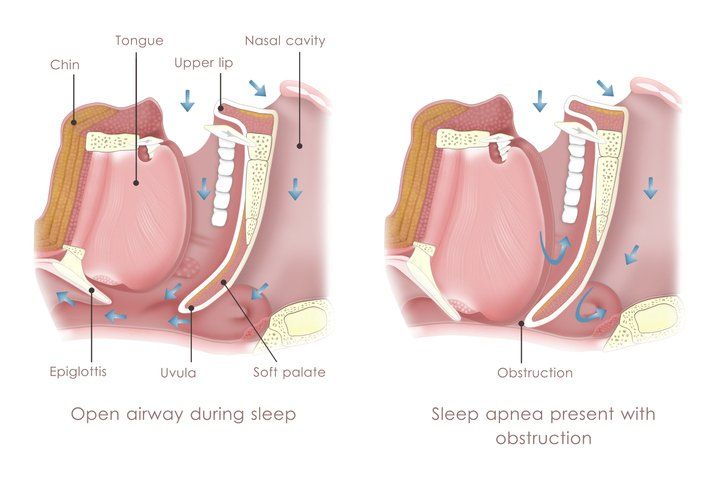Services
Sleep Apnea
Obstructive sleep apnea (OSA) is a serious condition which can lead to a number of health consequences and affect your quality of life. Untreated OSA can lead to high blood pressure, heart attack, heart disease, impaired memory, cognitive problems, stroke, and decreased libido. An estimated 20 million Americans are afflicted by obstructive sleep apnea, and many of these are undiagnosed.
Obstructive sleep apnea is a condition in which the upper airway collapses during sleep, leading to loud snoring, decreased oxygen levels, and sleep arousals. Sleep apnea is diagnosed by a sleep study (polysomnogram), and first line treatment is usually an oral appliance or air pressure device. For those who can’t tolerate CPAP treatment, there are a variety of surgical solutions that can be used to treat OSA.
Sleep apnea surgery is a specific area of expertise for Dr. Justin Clemow. His first step is to diagnose the type of collapse and the anatomic area of collapse so that he can select the appropriate surgical solution to address the problem. These surgeries will be performed in a hospital setting with an overnight stay.
Obstructive sleep apnea (OSA) is a serious condition which can lead to a number of health consequences and affect your quality of life. Untreated OSA can lead to high blood pressure, heart attack, heart disease, impaired memory, cognitive problems, stroke, and decreased libido. An estimated 20 million Americans are afflicted by obstructive sleep apnea, and many of these are undiagnosed.
Obstructive sleep apnea is a condition in which the upper airway collapses during sleep, leading to loud snoring, decreased oxygen levels, and sleep arousals. Sleep apnea is diagnosed by a sleep study (polysomnogram), and first line treatment is usually an oral appliance or air pressure device. For those who can’t tolerate CPAP treatment, there are a variety of surgical solutions that can be used to treat OSA.
Sleep apnea surgery is a specific area of expertise for Dr. Justin Clemow. His first step is to diagnose the type of collapse and the anatomic area of collapse so that he can select the appropriate surgical solution to address the problem. These surgeries will be performed in a hospital setting with an overnight stay.






